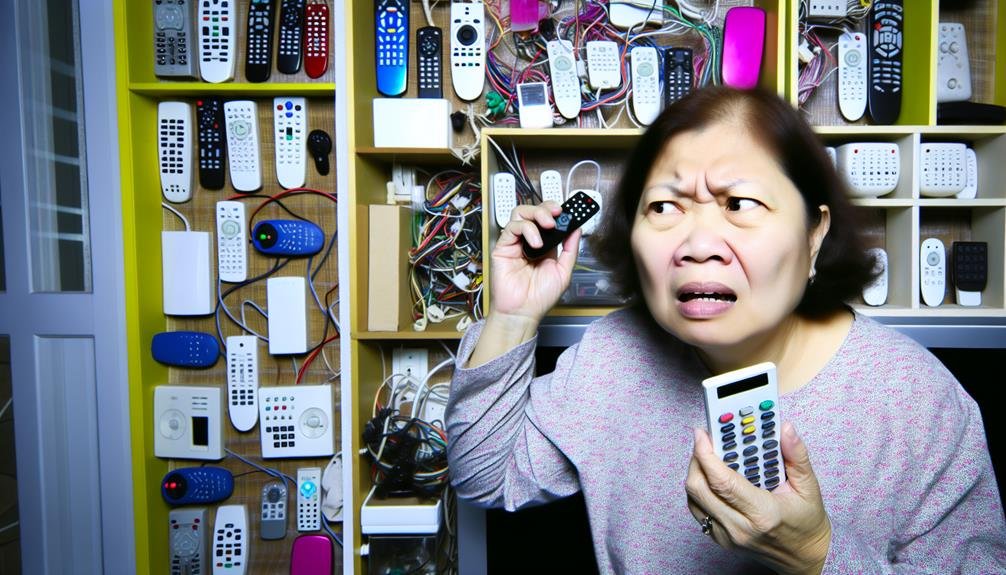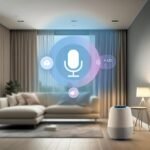You may think that smart home automation is just another passing trend, but you couldn't be more wrong. In fact, there are several common myths and misconceptions about this innovative technology that need to be debunked.
From concerns about security and loss of control to worries about high costs and compatibility issues, it's time to set the record straight. And that's not all, because we'll also explore the issue of privacy and why it's not as big of a problem as you might think.
So, sit back, relax, and prepare to have your preconceived notions shattered as we dive into the world of smart home automation.
Key Takeaways
- Smart home automation systems can be secured with proper precautions, such as regularly updating software and firmware, using strong passwords, and choosing reputable brands.
- Smart home automation actually gives you more control over your home, with remote access capabilities and customizable systems that allow you to set preferences and personalize your experience.
- While there may be initial costs involved, smart home automation can lead to long-term savings through reduced energy consumption, enhanced security and safety, and prevention of costly incidents.
- Efforts have been made to address compatibility issues, with hub-based systems acting as a bridge between different devices and advancements in technology promising easier device integration in the future.
Security Concerns
Smart home automation systems have often been subject to security concerns, but with proper safeguards in place, these concerns can be effectively addressed.
One of the main worries surrounding smart homes is the vulnerability to hacking. As technology advances, hackers are becoming more sophisticated, making it crucial for homeowners to prioritize security measures. However, it's important to note that just like any other internet-connected device, smart homes can be secured with the right precautions.
To mitigate the vulnerability to hacking, it's essential to regularly update the software and firmware of your smart home devices. Manufacturers often release security patches and updates that address potential vulnerabilities. Additionally, using strong and unique passwords for each device, as well as enabling two-factor authentication, can significantly enhance the security of your smart home system.
Another concern related to security is the potential for data breaches. Smart homes collect and store vast amounts of personal data, making them an attractive target for hackers. To protect your privacy, it's crucial to choose reputable brands and products that prioritize data security. Additionally, regularly reviewing the privacy settings and permissions of your devices can help ensure that your personal information remains secure.
Loss of Control
To ensure a seamless smart home experience, it's important to address concerns regarding the potential loss of control. One common misconception about smart home automation is that it takes away your ability to control your own home. However, this couldn't be further from the truth. With remote access capabilities, you actually gain more control over your home than ever before.
Smart home automation allows you to access and control various aspects of your home remotely, using your smartphone or other connected devices. This means that even when you're not at home, you can still adjust the temperature, turn on/off lights, lock/unlock doors, and even monitor security cameras. The convenience factor of being able to control your home from anywhere in the world is unparalleled.
Furthermore, smart home automation systems are designed to be user-friendly and customizable, giving you the freedom to set preferences and personalize your home automation experience. Whether it's scheduling your lights to turn on at a certain time or creating custom scenes for different occasions, the control is in your hands.
High Costs
One concern that often arises when considering smart home automation is the potential for high costs associated with implementing such a system. However, it's important to debunk this myth and understand that there are budget-friendly options available in the market.
Contrary to popular belief, smart home automation can actually lead to long-term savings. While the initial investment may seem high, the benefits and cost savings over time make it a worthwhile investment. By automating your home, you can reduce energy consumption and lower utility bills. For example, smart thermostats allow you to regulate your home's temperature more efficiently, saving you money on heating and cooling costs.
Smart lighting systems also help you reduce energy waste by automatically turning off lights when they're not in use.
Furthermore, smart home automation can enhance security and safety, potentially saving you from costly incidents. With smart security cameras, doorbell cameras, and alarm systems, you can remotely monitor your home and receive instant alerts in case of any suspicious activity. This can prevent break-ins and property damage, ultimately saving you money on repairs and insurance premiums.
Compatibility Issues
Many people worry about compatibility issues when it comes to implementing smart home automation systems. However, it's important to understand that while there may be some interoperability challenges and integration problems, these issues aren't as prevalent as some may think.
Here are three reasons why compatibility shouldn't be a major concern for you:
- Standardization: Over the years, there have been efforts to establish industry standards for smart home devices. This means that many products are designed to work well together, minimizing compatibility issues.
- Hub-based Systems: Many smart home automation systems utilize a central hub that acts as a bridge between different devices. These hubs are designed to handle the communication and interoperability between devices, ensuring smooth integration.
- Increasing Compatibility: As the smart home industry evolves, manufacturers are becoming more aware of the importance of compatibility. They're actively working to improve interoperability, making it easier for different devices to work together seamlessly.
While there may still be some hiccups along the way, it's important to remember that compatibility issues aren't insurmountable. With the advancements in technology and the commitment of manufacturers, the future of smart home automation looks promising, offering you the freedom to create the connected home of your dreams.
Lack of Privacy
While compatibility issues may not be a major concern, it is crucial to address the potential lack of privacy that comes with smart home automation systems. With the increasing popularity of these systems, it's important to understand the potential risks and take necessary precautions to protect your privacy.
One of the primary concerns when it comes to privacy is data collection. Smart home devices are designed to collect and analyze data about your daily activities, routines, and preferences. This data is then used to provide personalized experiences and improve the functionality of the system. However, it is important to be aware of what data is being collected and how it is being used. Transparency in data collection practices is key to maintaining privacy.
Another concern is the risk of hacking. Smart home devices are connected to the internet, making them vulnerable to cyber attacks. Hackers can potentially gain access to your personal data, control your devices, or even monitor your activities. To mitigate this risk, it is essential to follow best practices for securing your smart home network, such as using strong passwords, keeping software up to date, and using encryption protocols.
To better understand the privacy implications of smart home automation, let's take a look at the following table:
| Privacy Concerns | Potential Impact | Mitigation |
|---|---|---|
| Data collection | Personal data may be shared with third parties without consent | Review privacy policies and settings, limit data sharing |
| Hacking risks | Unauthorized access to devices and personal information | Secure your network, use strong passwords, enable two-factor authentication |






